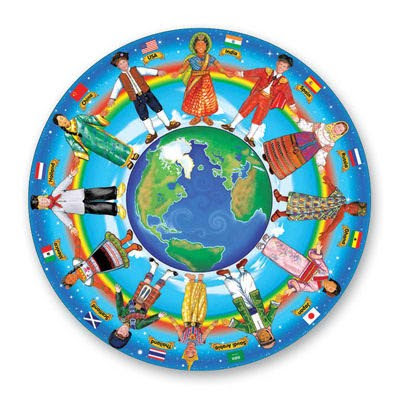FN-Blog-02 (cultural convergence)
CULTURAL CONVERGENCE
I.
Defining Cultural
Convergence
Cultural convergence is the theory
that two cultures will be more and more like each other as their interactions
increase. Basically, the more that cultures interact, the more that their
values, ideologies, behaviors, arts, and customs will start to reflect each
other. This trend is especially pronounced between cultures that are heavily
engaged with each other through communication and transportation technologies,
as well as organizational associations.
Cultural convergence very often
follows lines of communication, and the ability to communicate with people of
other cultures is what really makes convergence possible. That means that we
can often see the impacts of cultural convergence through the spread of
language. Throughout the 20th century, and continuing into today, this has
largely been seen through the spread of English.
It's important to
remember that cultural convergence is not something exclusive to the
interactions of cultures on different sides of the world.
- II. Cultural Convergence examples
a.
Using Technology
Technology enables people from different countries to have
immediate access to new ideas and cultural identities. Small and large
businesses across the globe use the Internet to interact with a wide customer
base. Adapting to customer interests and needs is a business necessity. The use
of technology such as computers, cell phones and the Internet encourages global
communication and provides opportunities for a fast-changing and evolving
cultural experience.
b. Accessing Language
The English language is a prime example of cultural convergence on a
global scale. English has become a main language of communication for people
around the world. Driven by economic realities, many countries have endorsed
English as a language that is necessary for their citizens to learn. Business
leaders realize that knowing English is a commodity that can mean financial
gain. The success and power of Western markets have contributed to this
cultural convergence. In many countries, English is taught to all school-age
children as part of the regular curriculum. At the same time, teaching English
as a foreign language in non-English-speaking countries has become a
study-abroad and career option for Americans.
c. Participative Politics
The political principles of democracy have seeped into different
countries over time and represent the ideology of cultural convergence.
Political leaders from democratic republics have encouraged other governments
to explore the ideas of a democratic process. Democracies have served as a role
model for engaged citizenry and this has influenced political change worldwide.
For example, the Soviet Union, once a communist-ruled country, fell apart in
1991. The citizens pushed for a new political process that is now considered a
form of democracy.
d. Celebrating Sports
A sporting event is a culture of its own. Sports bring together people
from all cultures that understand and appreciate the game. International events
such as the Olympics, World Cup soccer and other global competitions allow
international interaction and celebration. Respect for the sport and for the
winner transcends individual differences and national boundaries, and deepens
appreciation for the players as athletes. International teams can be followed
over the Internet and television. Even spectators and players attending events
in countries other than their own are exposed to new ideas and customs.
SOURCES:
KELLY.
(2001-2018). Leaf Group Ltd. “Cultural
Convergence Examples”
MUSCATO. (2003-2018). Study.com. “The Cultural Convergence Theory and Cultural Imperialism”. Retrieved from: https://study.com/academy/lesson/cultural-convergence-definition-examples.html




Mga Komento
Mag-post ng isang Komento